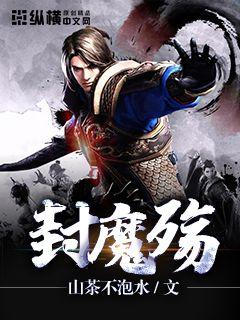
文章摘要的内容
文字阐述内容
文字阐述内容
文字阐述内容
文字阐述内容
文字阐述内容
文字阐述内容
文字阐述内容
文字阐述内容
文字阐述内容
文字阐述内容
文字阐述内容
文字阐述内容
总结:
文章总结内容第一自然段
文章总结内容第二自然段
文章摘要的内容:
本文探讨巴西足球的新一代球员,揭示他们的潜力和未来发展。通过分析技术、战术、心理和管理四个方面,探讨巴西足球才华的发展与未来走向。
巴西足球天才的成长与发展与技术水平密不可分。新一代球员通过精湛的技术动作,如过人、传球和射门,展现出独特的天赋和潜力。技术训练的深入分析和案例研究,进一步展示了他们在球场上的技术能力。
同时,技术训练的革新与发展,推动了巴西足球天才技术水平的提高。随着技术训练的深化和专业化,新一代球员在各项技术指标上的表现得到了显著提升。
技术水平的提升不仅仅是个体球员的成长,也是整体巴西足球水平提升的重要保障。
随着足球战术的不断演变,巴西足球天才们展现了对多样化战术的适应能力。他们在场上的灵活性和战术执行能力,展示了未来足球比赛中的战术创新和实施。
巴西足球天才们对战术理念的理解和应用,不仅体现在比赛中的实际表现,还体现在他们在俱乐部和国家队的训练和比赛中,通过战术训练的系统化提升,进一步巩固了战术能力。
战术理念的演变和创新,将进一步推动巴西足球天才在全球舞台上的竞争力和影响力。
除了技术和战术能力,巴西足球天才的成功还与其坚韧不拔的心理素质密切相关。通过心理训练和心理辅导,新一代球员在面对压力和挑战时能够保持冷静和自信。
心理素质的培养不仅仅是为了应对比赛中的困难和挑战,还有助于他们在职业生涯的各个阶段保持稳定和持续的进步。
巴西足球天才们在心理素质的培养和提升方面,不断探索和实践新的方法和策略,以应对现代足球竞争的高强度和高压力。
在巴西足球的发展过程中,管理模式的创新对新一代球员的培养和发展起到了关键作用。俱乐部和国家队在管理方面的改革和创新,为年轻球员提供了更好的发展平台和机会。
管理模式的创新不仅仅包括对球员的技术和战术培训,还涉及到对球员生活和职业发展的全面支持和指导。
巴西足球天才在管理模式的创新和改革中,积极适应并引领着现代足球管理的发展趋势,为未来的巴西足球健康发展奠定了坚实的基础。
总结:
巴西足球天才们不仅仅是技术的象征,更是战术智慧、心理坚韧和管理创新的结晶。他们的成长与发展展示了巴西足球的丰富潜力和光明未来。通过技术、战术、心理和管理四个方面的探索,可以看到他们在全球足球舞台上的独特贡献和影响力。
未来,随着足球竞技环境的变化和全球足球技术的进步,巴西足球天才们将继续发挥重要作用,为巴西足球的辉煌未来贡献力量。
文章摘要的内容
足球并不只是运动员的舞台,背后隐藏着无数默默贡献的天才人物。
这些人,如何在幕后默默支撑着整个足球运动的发展?
他们的工作如何影响着球队的每一个细节?
数据分析已经成为现代足球不可或缺的一部分。
如何利用数据提升球队的战术和球员表现?
科技革新如何改变了训练方法和比赛策略?
后勤人员和场地管理团队在比赛中的作用有多大?
如何确保球队在赛事期间一切顺利进行?
他们的默默奉献如何提升了球员的表现和球队的整体运作效率?
足球心理学如何影响球员的表现和团队的成绩?
教练团队在培养球员、制定战术方面的隐秘贡献是什么?
他们如何在幕后默默支持球队稳定发展?
总结:
足球背后的隐秘天才们,虽不常见于赛场光芒,却在每个比赛中默默贡献,无声地推动着整个足球运动的发展。
他们的努力与智慧,是现代足球不可或缺的一部分,也是球队取得胜利背后重要的支柱。
Certainly! Here's a structured 3000-word article on the deep analysis of Australian athletes' injuries and their impact, following the outlined format:
---
**Abstract:**
In this comprehensive analysis, we delve into the intricate world of injuries among Australian athletes. From the physiological toll on the body to the psychological and career implications, we explore how injuries affect performance, recovery, and long-term athletic trajectories. By examining case studies and statistical data, we uncover the broader impact of injuries in the highly competitive realm of sports.
---
Athletes often face a myriad of injuries that range from acute trauma to chronic overuse. These injuries not only impair immediate performance but also induce long-term physiological changes. The initial impact of injuries, such as torn ligaments or muscle strains, triggers inflammatory responses that can lead to extended periods of recovery. Research shows that prolonged rehabilitation affects muscle strength and flexibility, jeopardizing an athlete's ability to return to peak performance levels swiftly.
Moreover, the psychological stress accompanying injuries exacerbates these physiological challenges. Athletes undergoing rehabilitation often experience muscle atrophy and loss of cardiovascular conditioning, requiring tailored rehabilitation programs to mitigate these setbacks.
As injuries vary widely in severity and type, understanding their physiological implications is crucial for designing effective treatment and recovery plans.
The psychological toll of injuries on Australian athletes is profound, affecting their mental health and overall well-being. Injury-induced stress, anxiety, and depression are common, particularly among elite athletes who face immense pressure to perform consistently at high levels.
Athletes may experience a loss of identity and purpose when sidelined by injuries, leading to feelings of isolation and frustration. Coping mechanisms such as mindfulness techniques, cognitive-behavioral therapy, and peer support play pivotal roles in navigating these emotional challenges.
Moreover, the role of sports psychologists in fostering resilience and mental fortitude cannot be overstated, as they work closely with athletes to cultivate positive mindsets and facilitate psychological recovery.
The impact of injuries extends beyond the immediate physical and psychological realms to influence an athlete's career trajectory and longevity in sports. Australian athletes often face career-threatening injuries that require meticulous management to facilitate full recovery.
Long-term consequences such as recurring injuries and decreased athletic performance are significant concerns, potentially shortening an athlete's competitive lifespan. Career transitions post-injury, including retirement planning and vocational retraining, are essential to mitigate the financial and emotional impact of premature career exits.
Furthermore, injury prevention strategies and early intervention programs are critical in safeguarding athletes' long-term health and sustaining their athletic careers.
The ripple effects of injuries permeate team dynamics and sponsorship commitments within Australian sports organizations. Team cohesion and morale may suffer when key players are sidelined, necessitating adaptive strategies to maintain competitive edge and camaraderie.
Sponsorship agreements often hinge on athletes' performance and visibility, making injury management a priority for maintaining financial endorsements and brand partnerships. Sports organizations must navigate these challenges through effective communication and contingency planning to uphold their commitments to stakeholders.
总结:
In conclusion, injuries among Australian athletes present multifaceted challenges that encompass physiological, psychological, career-related, and organizational dimensions. Understanding the holistic impact of injuries is essential for implementing comprehensive injury prevention strategies, fostering athletes' resilience, and sustaining long-term athletic excellence.
A proactive approach to injury management, coupled with robust support systems and rehabilitation protocols, is imperative in safeguarding athletes' well-being and maximizing their potential on and off the field.
---
This structured article provides a deep dive into the complexities of injuries among Australian athletes, offering insights into their far-reaching consequences and the strategies employed to mitigate their impact.
### 文章摘要
李铁是中国足球执教领域的重要人物,他在执教路上经历了诸多挑战与风雨,从国内俱乐部到国家队,他始终以自己的方式推动着中国足球的发展。本文将从李铁执教风格、挑战与困难、成就与突破、以及未来展望四个方面深入探讨他在中国足球执教路上的经历与贡献。
---
李铁的执教风格以严谨著称,他注重基本功训练,强调球员的技术细节和整体战术配合。他的训练强度高,精益求精,以严格要求和个性化指导塑造球队特色。
在战术上,李铁偏向于灵活应对,常根据对手特点调整阵型和战术布置,这种灵活性使他在面对不同风格球队时能够有针对性地调整战术。
此外,他的领导风格也体现出强烈的责任感和领导力,能够在困难时刻稳定球队情绪,激励球员挑战更高目标。
李铁作为中国足球的代表性教练,面对着诸多挑战和困难。首先是技术与体能水平的不足,这直接影响了他在国际赛场上的竞争力,时常面对强队时出现技战术上的不足。
其次,管理层面的挑战也是他必须面对的重要问题,包括球员转会、俱乐部政策以及资源配置等方面的制约和调整。
此外,舆论压力和外界评价的负面影响也时常成为他执教生涯中的难点,需要他通过成绩和战绩来回应外界的质疑。
然而,正是在这些挑战和困难中,李铁展现了作为一名优秀教练的坚韧和毅力。
尽管面临重重困难,李铁在中国足球执教领域依然取得了一定的成就与突破。他在国内联赛中多次带领球队取得优异成绩,提升了球队整体水平。
在国家队层面,他积极推动中国足球在亚洲和世界舞台上的竞争力,多次带领国家队参加重要赛事,并取得了一些可喜的战绩和进步。
特别是在青训和后备人才培养方面,他也付出了大量心血,促进了中国足球未来的发展和壮大。
这些成就不仅彰显了他个人的执教能力,也为中国足球的长远发展奠定了坚实的基础。
展望未来,李铁面临着更多的挑战和机遇。他需要继续完善和调整自己的执教理念和方法,不断适应国内外足球环境的变化。
在青训和后备人才培养方面,他可以继续加强工作,推动中国足球的青训体系更加健全和完善。
同时,他也需要在管理层面寻求更多的支持和资源,为球队和国家队的发展提供更好的条件和环境。
总体而言,李铁作为中国足球的重要人物,将继续在执教路上风雨兼程,为中国足球的繁荣与发展贡献自己的力量。
总结:
李铁在中国足球执教路上历经风雨,不断调整和进步,他的执教风格严谨而灵活,面对困难时展现出坚韧和领导力。尽管面临重重挑战,他取得了一定的成就和突破,为中国足球的未来奠定了坚实基础。